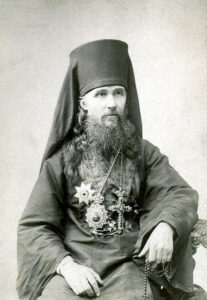Just a quick note: thanks to a Twitter conversation with @kab3d, I have the opportunity to present at the conference, “Crime and Punishment at 150,” to be held at UBC in October (preliminary program here).
How does my 44 Lenin Avenue research relate to Dostoevsky’s Crime and Punishment? Well, see my title and abstract, below:
“A Real-Life Raskolnikov? Crime and Punishment meets crime and punishment in 1909 Tomsk”
On the night of May 8/9, 1909 in the centre of Tomsk, Siberia, two students at the church-teachers’ school strangled their headmaster, the young monk and arch-reactionary Ignatii Dvernitskii. The murder shocked the town, with competing versions of the motives almost immediately offered in the local and even national press. The murder itself–the victim, the perpetrators, the location–quickly brings the interested observer to the themes of conservatism, anti-Semitism, student activism, religion, education, crime, and punishment in the reactionary period after Russia’s 1905 revolution. Curiously, however, one of the big debates at the time related to the influence of Dostoevsky’s Crime and Punishment on one of the perpetrators, a young man by the name of Gerasim Iurinov. Should we consider him a real-life Raskolnikov? Can Dostoevsky’s novel help today’s observer understand the murder of Ignatii Dvernitskii?
 For instance, A. P. Tolochko shows that Tomsk gubernaia had by far the largest number of pro-monarchist organizations in Siberia, and that the city of Tomsk itself likely had the largest number of individual members. If at the end of 1906, beginning of 1907 the Tobol’sk region had 1 such organization, the Tomsk region had 11, despite very similar economic situations in both parts of Western Siberia. [see A. P. Tolochko, “Territorial’noe razmeshchenie, chislennost’ i sotsial’nyi sostav chernosotennykh organizatsii v sibiri v nachal’nik XX v,” in Chelovok v Istorii, edited A. N. Zheravina et. al. (Tomsk: Tomsk University Press, 1999), 198-206.]
For instance, A. P. Tolochko shows that Tomsk gubernaia had by far the largest number of pro-monarchist organizations in Siberia, and that the city of Tomsk itself likely had the largest number of individual members. If at the end of 1906, beginning of 1907 the Tobol’sk region had 1 such organization, the Tomsk region had 11, despite very similar economic situations in both parts of Western Siberia. [see A. P. Tolochko, “Territorial’noe razmeshchenie, chislennost’ i sotsial’nyi sostav chernosotennykh organizatsii v sibiri v nachal’nik XX v,” in Chelovok v Istorii, edited A. N. Zheravina et. al. (Tomsk: Tomsk University Press, 1999), 198-206.] 
